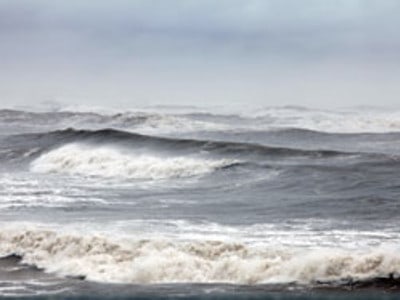
 Nova Scotia Power has announced that power supplied by renewables reached 26.6% in 2015, up from 22% in 2014 and 9% in 2007.
Nova Scotia Power has announced that power supplied by renewables reached 26.6% in 2015, up from 22% in 2014 and 9% in 2007.
If all goes according to plan, particularly with the Maritime Link project coming online in 2017, the province projects that 47% of its energy supply will be provided by non-fossil fuel sources in 2020.
“We have made remarkable progress in Nova Scotia,” said Vice President of Power Generation and Delivery for Nova Scotia Power Mark Sidebottom. “No other utility in Canada has made this rapid of a transition. In 2020, we will have a greater percentage of our electricity coming from renewables than Germany, which is often recognized as a world leader in renewable energy.”
This is a dramatic turnaround for Nova Scotia, not typically associated with renewable energy or innovation in the past, with the historical dominance of the culture of Cape Breton coal mining.
In 2007, coal supplied 76% of the province’s energy needs, dropping to 55.9% in 2015 and projected to slide to 45% by 2020.
Not everything is rosy on the coal front, however. There has been chatter recently of opening the fabled Donkin Mine, a seabed coal reserve off the coast of Cape Breton.
Kameron Collieries, the company led by U.S. billionaire Chris Cline hoping to open the mine up, has been conducting interviews in Alberta, mainly courting expatriate Maritimers to come back and work in their region.
While a narrative of Maritimers sensing the opportunity to return to the region is an inherently good news story, the opening of a new coal mine would obviously represent a step backwards for Nova Scotia.
While the Maritime Link project will be significant in reducing the role of coal in the province’s future, the growth of wind power has also been driving Nova Scotia’s energy turnaround.
There are now 294 commercial, mostly independently owned, wind turbines producing electricity, sometimes supplying as much as 50% of the province’s electricity supply and almost none at all during non-windy periods.
In 2015, 14% of Nova Scotia’s energy was supplied by wind, up from 1% in 2007.
A collaboration between Nalcor Energy and Emera Inc., the Maritime Link is a $1.6 billion 170-kilometre undersea cable linking the Muskrat Falls hydroelectric project in Labrador, down to Newfoundland and then along to Nova Scotia, projected to be online in October 2017.
The Fundy Ocean Research Centre (FORCE) is conducting ongoing trials of turbine deployment and underwater platform monitoring at locations in the Bay of Fundy.
As those efforts ramp up, Nova Scotia’s tidal energy supply is projected to rise from 9.8% in 2015 to 22% in 2020.
“Coming out of the Paris climate accord, it’s clear that we’re moving globally toward a lower carbon future,” said Sidebottom. “Guided by provincial legislation that enables made-in-Nova Scotia solutions, we’re making great progress on reducing emissions and adding renewable energy in a manner that’s affordable for Nova Scotia families and businesses.”

Leave a Reply
You must be logged in to post a comment.




 Share
Share Tweet
Tweet Share
Share




Comment